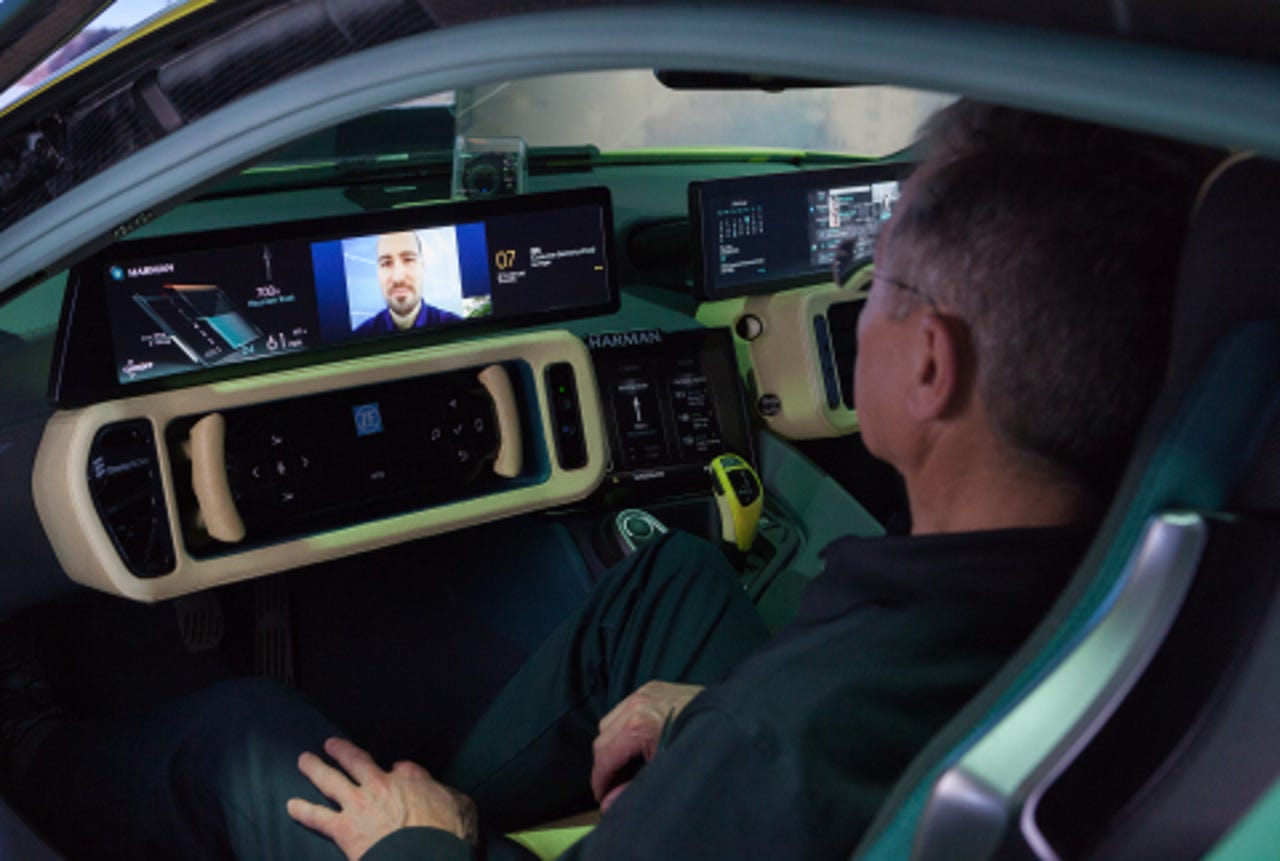The downside to driverless cars: More time for email and conference calls


Is your car about to become your office?
As self-driving cars become a reality, the question is: what will you do on your travels if you're not busy driving?
In the US, the average vehicle occupant spends about an hour a day traveling -- time that could potentially be put to more productive use. According to one estimate, the advent of autonomous vehicles could result in productivity gains of up to $507bn annually in the US, if the 75 billion hours a year spent driving could be better employed.
Instead of staring at the road, "commuters are free to catch up on work, more sleep, the show they missed last night, or the latest deals online," Morgan Stanley envisaged last year.
Software companies are already looking at how to fill that newly-empty time with more useful activities. For example, Microsoft recently published a report entitled The Future of Automotive, which included a scenario of how a journey home from the office might look in future.
"Nancy walks out of her office on a conference call with a client and members of her team. As she approaches the vehicle, the doors unlock and the ignition switches on. As Nancy gets into the driver's seat, the conference call seamlessly switches from her phone to a hands-free option within the vehicle, allowing her to continue the conversation as she heads for home... Nancy asks Cortana to pull up her work email, which allows her to hear and respond to messages in her inbox."
Office in the car
Microsoft is working with automotive manufacturers to make passengers more productive while being driven around: Office 365 in the car includes Microsoft Exchange support, which integrates work calendar, to-do list, and contacts with the vehicle's voice and navigation systems.
Earlier this month Daimler said it would be using this as the basis of the 'in-car office' in some of its Mercedes models from the middle of next year. The system will be able to dial you into conference calls, and use calendar data to auto-populate your car's navigation unit with driving directions for an upcoming meeting, and even set up Skype video chats in autonomous cars, when they arrive.
Also, in January Microsoft and Harman announced a connected car project to include Office 365 capabilities in its infotainment systems, allowing users to schedule meetings, hear and respond to emails, or automatically join conference calls without having to manually input the phone number and passcode. Drivers will also be able to hold Skype calls and conferences when parked, or on the road with autonomous vehicles.
Obstacles
There are a number of obstacles in the way of making everyone more productive on their commute. A recent study by the University of Michigan's Sustainable Worldwide Transportation group suggested that for nearly two-thirds of riders, self-driving vehicles are unlikely to result in an short-term improvement in productivity.
That's because 23 percent said they would not ride in such vehicles, and 36 percent would be so apprehensive in such vehicles that they would only watch the road. Another eight percent said they'd be too busy feeling sick to do any work. Other worries included what would happen to untethered objects being used for productivity, such as tablets or laptops, in the event of a crash.
The researchers, Michael Sivak and Brandon Schoettle, said the hoped-for productivity gains in self-driving vehicles appear with increased occupant confidence in such vehicles, which would make passengers more comfortable performing productive tasks. The researchers also said that the "inherent motion-sickness problem" needs to be fixed, and that car-makers need to figure out how to protect passengers from "untethered objects becoming projectiles during crashes" or getting between the occupants and their airbags.
Many trips only average about 19 minutes, which the researchers note is "a rather short duration for sustained productive activity or invigorating sleep". But maybe that's time enough to send a few emails.
Read more on driverless cars
- Photos: The amazing prototypes in the race to build self-driving cars
- Google hires Airbnb executive to commercialize self-driving cars
- BMW teams with Intel, Mobileye to develop self-driving cars by 2021
- Why the connected car is one of this generation's biggest security risks
- CNET: Michigan is one step closer to putting driverless vehicles on the road
- TechRepublic: 10 companies hiring people to work on driverless cars